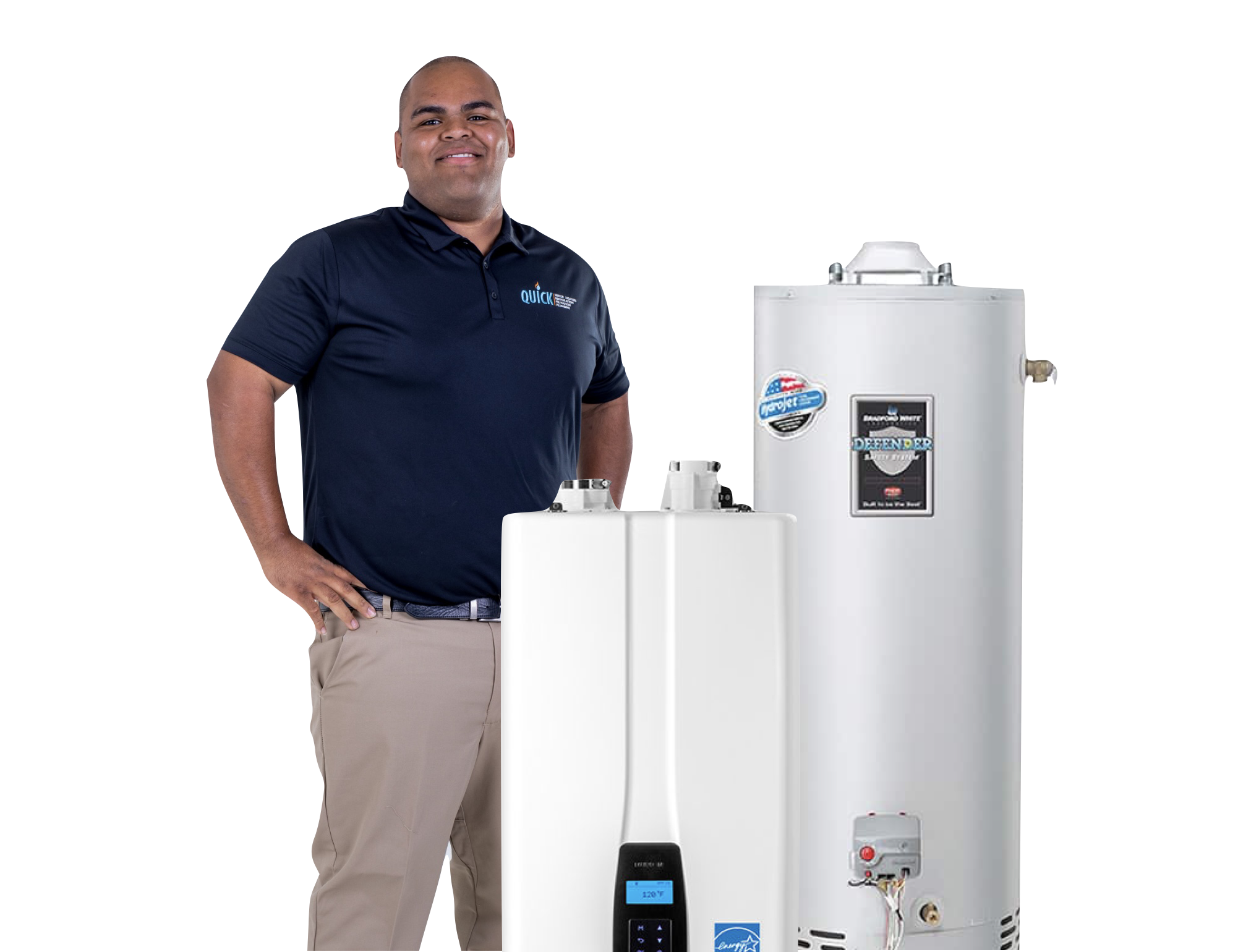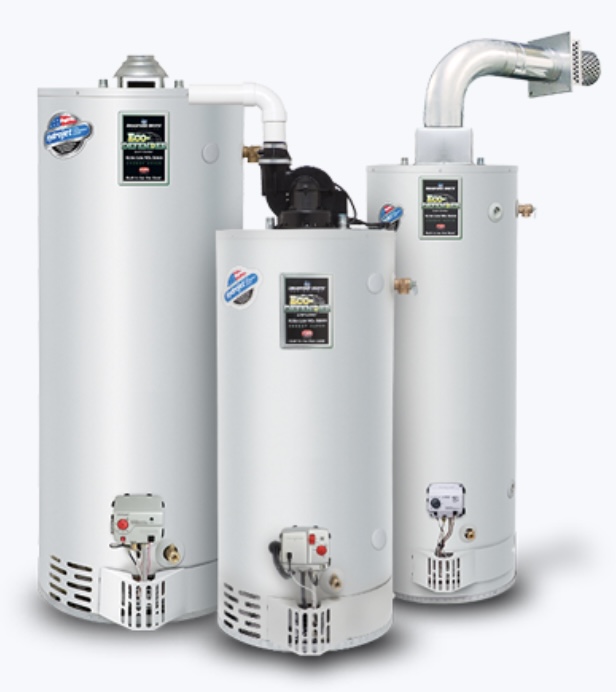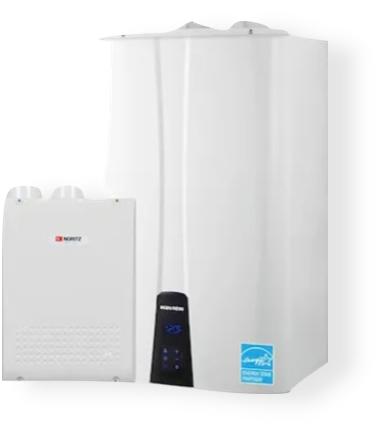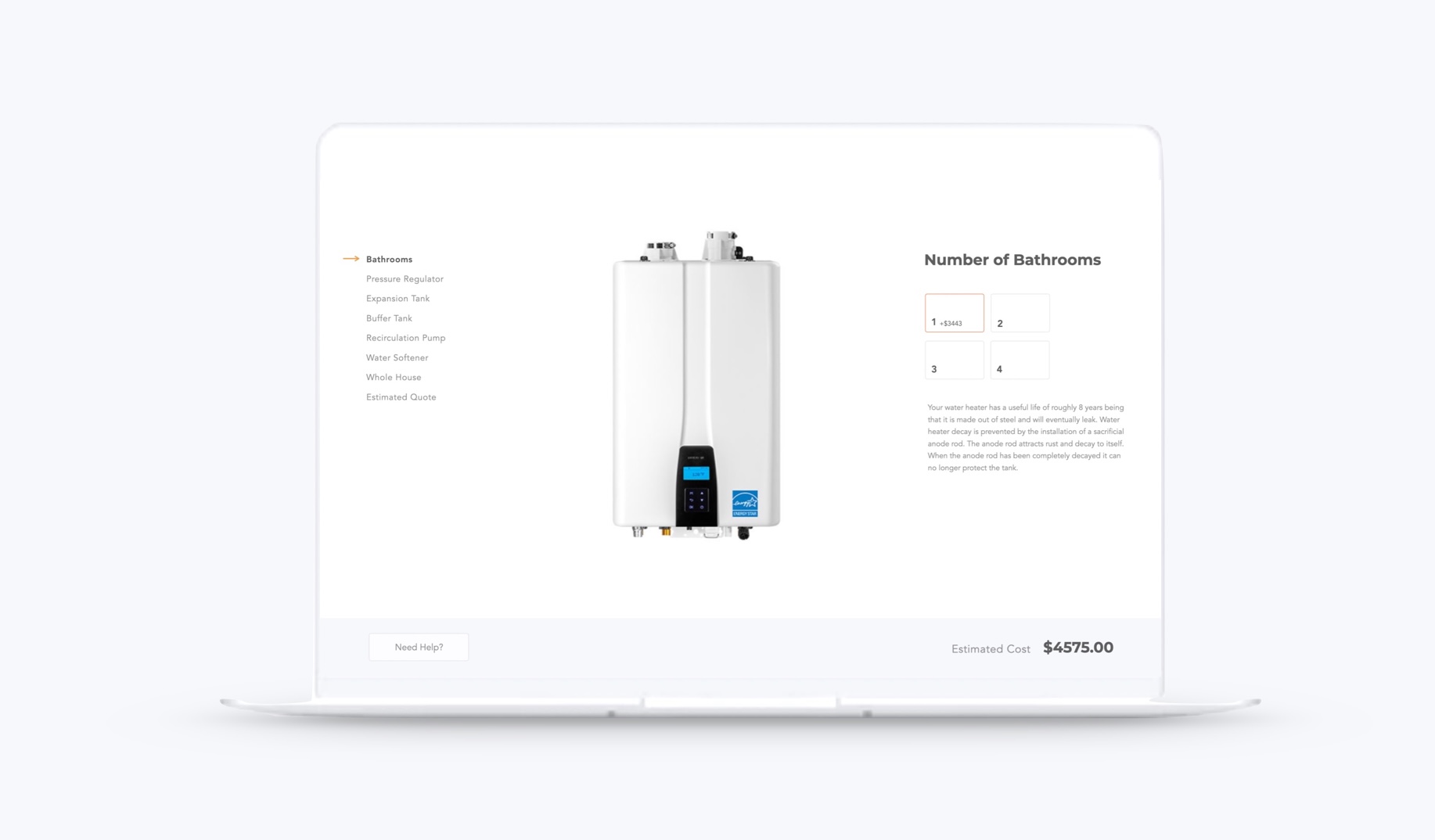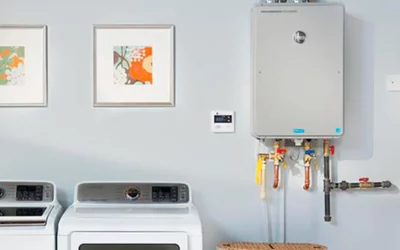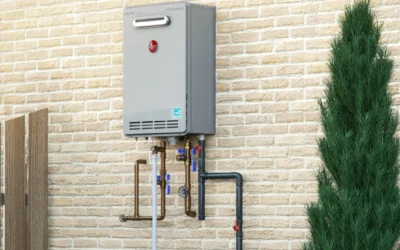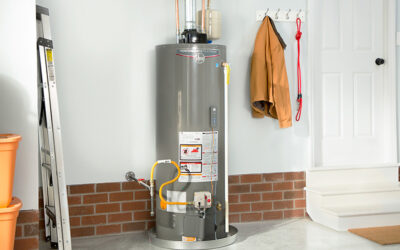When it comes to repairing an instant water heater, there are several steps you can take to troubleshoot and fix common issues. Understanding the basics of how an instant water heater works is essential in identifying and addressing any problems that may arise. By following a few DIY repair steps, you may be able to resolve issues such as no hot water, leaking water, or strange noises. However, there are certain situations, such as gas leakage, major water leaks, or electrical malfunctions, where it is best to call a professional. Additionally, practicing preventive maintenance, such as regular cleaning, flushing the tank, and inspecting the anode rod, can help prolong the lifespan of your instant water heater. If you have any questions about repairing your instant water heater, refer to the FAQs section for additional guidance.
Understanding the Basics
In this section, we will discuss the basics of instant water heaters, including what they are and the different types available.
What is an Instant Water Heater?
An instant water heater is a type of water heating system that provides hot water on demand, without the need for a storage tank.
Types of Instant Water Heaters
There are several types of instant water heaters available in the market. One common type is the tankless water heater, which heats water directly without the need for a storage tank. This type is known for its energy efficiency and continuous supply of hot water. Another type is the point-of-use water heater, which is typically installed near the sink or shower it serves. This type is suitable for small spaces or specific areas that require hot water. Additionally, there are also electric and gas instant water heaters, each with their own advantages and considerations. Electric instant water heaters are easy to install and require less maintenance, while gas instant water heaters are known for their fast heating capabilities and cost efficiency. Understanding the different types of instant water heaters will help you choose the right one for your needs.
Identifying Common Issues
Identifying common issues with instant water heaters is crucial in order to address any problems efficiently and effectively.
No Hot Water
If you are experiencing the issue of no hot water in your instant water heater, there are a few potential causes to consider. First, check if the power supply to the heater is functioning properly. Make sure the circuit breaker is not tripped and that the power switch is turned on. If the power supply is not the issue, the heating element might be faulty and needs to be tested. Additionally, a faulty thermostat could be preventing the water from heating up. It is recommended to follow the appropriate DIY repair steps or consult a professional if you are unsure about handling these repairs yourself.
Leaking Water
If you have noticed leaking water from your instant water heater, it is important to address the issue promptly to prevent further damage. Leaks can occur due to various reasons, such as a faulty valve, loose connections, or a damaged tank. To identify the source of the leak, visually inspect the heater and check for any visible signs of water dripping or pooling. Additionally, check the connections and valves for any signs of looseness or damage. If you are unable to locate the source or if the leak is significant, it is recommended to call a professional plumber to assess and repair the issue.
Strange Noises
Strange noises coming from your instant water heater can be a cause for concern. These noises can indicate various issues with the unit that may require attention. One possible cause of strange noises is sediment buildup within the tank, which can create popping or cracking sounds as the water heats up. Another potential cause is a faulty heating element, which can produce hissing or sizzling noises. Additionally, a loose or damaged component within the heater can also result in unusual sounds. If you hear strange noises coming from your instant water heater, it is advisable to investigate the issue further or seek professional help to prevent any potential damage or malfunction.
DIY Repair Steps
For the DIY repair steps, follow these easy steps to fix any issues with your instant water heater:
- Step 1: Start by checking the power supply to ensure that the heater is receiving electricity.
- Step 2: Test the heating element using a multimeter to determine if it is functioning properly.
- Step 3: If the thermostat is faulty, replace it with a new one to restore proper heating.
Checking the Power Supply
When it comes to repairing an instant water heater, one of the essential steps is checking the power supply. This is crucial because if there is no power reaching the unit, it won’t be able to heat the water effectively. To check the power supply, you can start by ensuring that the water heater is properly plugged into a functioning power outlet. Additionally, you can use a multimeter to test the voltage at the power supply terminals of the heater. If there is no power or an insufficient power supply, you may need to troubleshoot the electrical connections or consult a professional electrician for further assistance.
Testing the Heating Element
When it comes to repairing an instant water heater, one important step is testing the heating element. The heating element is responsible for heating the water in the tank, so if it is faulty, it can lead to issues such as no hot water or insufficient heating. To test the heating element, you can follow a few simple steps. First, ensure that the power supply to the water heater is turned off. Then, locate the heating element, which is typically located near the bottom of the tank. Use a multimeter to measure the resistance of the heating element. A reading of infinite resistance indicates that the heating element is faulty and needs to be replaced. On the other hand, a reading of zero resistance suggests that the heating element is functioning properly. By testing the heating element, you can identify if it is the cause of any heating issues and take appropriate repair actions.
Replacing Faulty Thermostat
To replace a faulty thermostat in an instant water heater, follow these steps:
- Turn off the power supply to the water heater by flipping the corresponding circuit breaker in your electrical panel.
- Locate the thermostat cover panel on the water heater. It is usually located near the bottom of the unit.
- Remove the screws securing the thermostat cover panel and carefully take off the cover.
- Take note of the wiring connections on the thermostat before disconnecting them. It can be helpful to take a picture for reference.
- Disconnect the wiring connections from the faulty thermostat and remove it from the water heater.
- Install the new thermostat by connecting the wiring to the appropriate terminals. Refer to the manufacturer’s instructions for the correct wiring configuration.
- Replace the thermostat cover panel and secure it with the screws.
- Turn the power supply back on by flipping the circuit breaker.
- Test the water heater to ensure the thermostat is functioning properly by running hot water and checking for consistent temperature.
By following these steps, you will be able to replace a faulty thermostat in your instant water heater and restore its proper functionality.
When to Call a Professional
Knowing when it is appropriate to call a professional for assistance with your instant water heater can help prevent further damage and ensure a safe and effective repair.
Gas Leakage
If you notice a gas leakage in your instant water heater, it is crucial to address the issue immediately. Gas leakages can be dangerous and pose a risk to your safety. In such cases, it is recommended to call a professional plumber or a gas technician who is trained to handle gas-related issues. They will be able to identify the source of the leak and take the necessary steps to repair it. Attempting to fix a gas leakage on your own can be hazardous and should be avoided. Always prioritize your safety and seek professional help in such situations.
Major Water Leak
Major water leaks in an instant water heater can be a cause for concern and should be addressed immediately. These leaks can lead to water damage and potential flooding if left unattended. If you notice a major water leak in your instant water heater, it is important to turn off the power supply and shut off the water source to prevent further damage. Contacting a professional plumber is highly recommended in this situation, as they have the expertise to identify the source of the leak and make the necessary repairs. Delaying the repair of a major water leak can result in more extensive damage and higher repair costs.
Electrical Malfunction
An electrical malfunction in an instant water heater can be a serious issue that requires immediate attention from a professional. This problem can manifest in various ways, such as the unit not turning on, frequent tripping of circuit breakers, or erratic behavior of the controls. It is important not to attempt any DIY repairs or troubleshooting when dealing with an electrical malfunction, as it can be dangerous and may result in further damage or even electrical hazards. Instead, it is recommended to contact a licensed electrician or a qualified technician who specializes in instant water heater repairs to diagnose and resolve the electrical issue safely.
Preventive Maintenance Tips
Preventive maintenance tips for instant water heaters include regular cleaning, flushing the tank, and inspecting the anode rod.
Regular Cleaning
Regular cleaning is an essential maintenance task for instant water heaters. It helps to remove any sediment or mineral buildup that can affect the performance and efficiency of the heater. To clean your instant water heater, start by turning off the power supply. Then, drain the tank by connecting a hose to the drain valve and emptying the water into a suitable container or drain. Once the tank is empty, use a soft brush or sponge to scrub the interior surfaces of the tank, focusing on areas where sediment tends to accumulate. Rinse the tank thoroughly with clean water to remove any residue. Finally, close the drain valve, refill the tank, and restore the power supply. Regular cleaning should be done at least once a year to ensure optimal performance and prolong the lifespan of your instant water heater.
Flushing the Tank
Flushing the tank is an important maintenance task for your instant water heater. Over time, sediment and mineral deposits can build up in the tank, which can affect the efficiency and performance of the heater. Flushing the tank involves draining the water from the tank and removing any accumulated debris. This process helps to prolong the lifespan of the water heater and ensures that it continues to operate effectively. To flush the tank, you will need to turn off the power supply to the heater, connect a hose to the drain valve, and allow the water to fully drain from the tank. It is recommended to perform this task at least once a year to prevent any issues and maintain optimal functionality.
Inspecting Anode Rod
Inspecting the anode rod is an essential step in maintaining your instant water heater. The anode rod is responsible for attracting corrosive elements in the water, which helps protect the tank from rust and prolong its lifespan. To inspect the anode rod, you will need to locate it near the top of the tank. Turn off the power supply and water inlet valve before proceeding. Unscrew the hex head of the rod using a socket wrench or a suitable tool. Carefully examine the rod for any signs of corrosion or deterioration. If the rod is heavily corroded or worn out, it is recommended to replace it with a new one. Regularly inspecting the anode rod will ensure the optimal performance and longevity of your instant water heater.
FAQs
Answering frequently asked questions about instant water heaters, including how to repair them, the importance of regular maintenance, common issues, and when to call a professional.
Can I repair an instant water heater myself?
Repairing an instant water heater yourself can be possible depending on the issue, your level of expertise, and the availability of proper tools and resources.
How often should I clean my instant water heater?
Cleaning your instant water heater regularly is important to maintain its efficiency and prevent buildup of sediment or mineral deposits that can affect its performance.
What causes a water heater to leak?
Water heaters can leak due to various reasons such as a faulty pressure relief valve, a corroded tank, loose connections, or excessive pressure in the tank.
When should I replace my instant water heater?
Replacing an instant water heater should be considered when it is no longer functioning properly or efficiently, or if it is more cost-effective to invest in a new unit rather than repairing the existing one.


